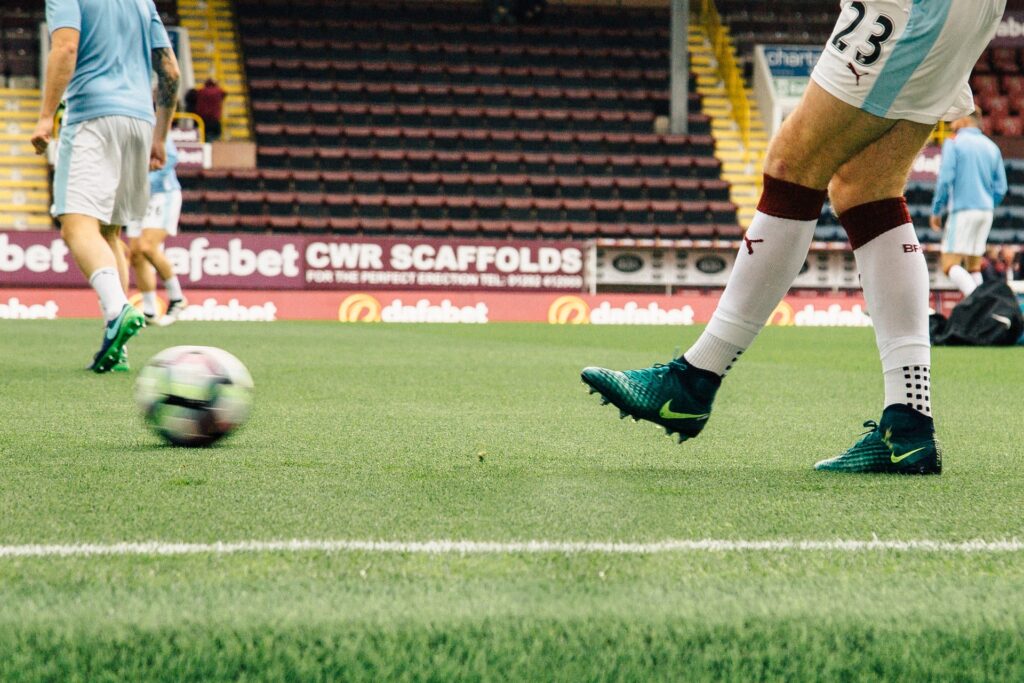The role of a playmaker in soccer is extremely important to a team’s overall success. As such, most teams employ a playmaker to orchestrate their attacks and create chances.
Here, we explain everything you need to know about playmakers, and introduce you to five soccer geniuses that have the art nailed down to a tee.
So, what is a playmaker in soccer?
A playmaker in soccer is responsible for creating chances and building attacks on the field. They adopt various positions and have a range of attributes, and it’s a position that takes on so many roles.
In the following sections, we explain why so many teams opt to play with a playmaker and break down the different roles that playmakers on the field typically hold. We also introduce you to five of the best playmakers in world soccer to help you find some inspiration.
So, let’s take a look at why the role of a playmaker is such an important one for teams all around the world.
Why do you need a playmaker?
The role of a playmaker in soccer is crucial, as it’s the person that is responsible for creating your team’s scoring chances. Typically, the other players on the team try and get the ball to the playmaker as often as possible so they have the best chance of creating chances.
If you don’t utilize a playmaker, it can be difficult for your players to know how to focus their attacks. As a result, they’re likely to be less effective in the attacking third. So, it makes sense to designate the role of a playmaker to ensure your attacking threat has a focal point.
What’s more, electing a playmaker also ensures your teammates best utilize the skills of an individual. Playmakers have great vision, are assured passers, and often dictate the tempo of the game. These skills are super valuable, so it’s best to make the most of them.
You will find that most teams play with some form of a playmaker, but there are multiple different ways to employ this role, as we explore in the following section.
The different types of playmakers in soccer

As crucial as the role of the playmaker is, there are actually several ways of employing this important role on the soccer field. Some of the different types of playmakers include:
Trequartista
In soccer, a trequartista is an attacking playmaker, and it’s one of the most specialist positions on the field. The term is Italian, and it literally means “three quarters.” It refers to where the person is most likely to be found on the field – in the final third.
A treqauartista plays between the midfield and forward line, and positioning is vital. They play like a traditional number ten, looking to get on the ball as often as possible to link the play from the midfield to the attack.
Many treqauartistas are diminutive in stature and have a low center of balance, helping them pivot in tight spaces to ensure play flows from front to back. Some trequartistas also move into wide positions to link up play, but it depends on a team’s tactics.
Italian playmaker Lorenzo Insigne is a great example of a trequartista in soccer.
Advanced playmaker
An advanced playmaker in soccer is similar to a treaquartista, but they’re often given more license to roam throughout the attacking third. While most trequartistas stay central, advanced playmakers find themselves all over the field, looking for spaces and gaps to exploit.
Another key feature of an advanced playmaker is that they always look to play forward and spring attacks. They receive the ball and immediately open up to look for an incisive pass between the lines in order to try and create chances for their teammates.
Again, advanced playmakers require excellent vision and passing abilities, but they also need a good eye for goal. Advanced playmakers are also usually effective set play takers, further contributing to a team’s attack.
Manchester United’s star player Bruno Fernandes is a great example of an advanced playmaker in soccer.
Deep-lying playmaker
Some teams prefer to build attacks from deep in their own halves, which is where the role of the deep-lying playmaker comes in. The deep-lying playmaker is a little like an NFL quarterback – they look to launch attacks by using their vision and passing accuracy.
It’s common for a deep-lying playmaker to drop into the backline to receive the ball from the goalkeeper before transitioning forward with the attack. They bring everyone into play and orchestrate attacks from all over the field.
As well as having an astute vision and an excellent range of passing, deep-lying playmakers also require a good engine and high fitness levels, as they are responsible for participating in plays throughout the field.
Brazilian international midfielder Bruno Guimaraes is a great example of a deep-lying playmaker in soccer.
False nine
The false nine is one of the most specialist positions in soccer, but it’s not necessarily always a playmaking role. Still, when employed correctly, a false nine can be a great way of building dangerous situations in the attacking third.
Instead of playing like a traditional number nine that leads the line in attack, a false nine drops back into midfield to build attacks and link the play. It’s difficult to play against a false nine, as defenders don’t know whether to keep their shape or follow the run into midfield.
A false nine is expected to contribute equally to the midfield and attack and is the primary source of link-up play between the two lines. As such, it’s a complex role that requires a high level of positional sense and movement.
Argentinian legend Lionel Messi is perhaps the best false nine in the world, but he can also play in lots of different positions, such is his talent.
Interested to learn more about the specialist position of the false nine in soccer? Check out our recent post, where we explore what it means to be a false nine in more detail!
Libero/Ball-playing defender
Sometimes, sweepers can also be playmakers. This is particularly the case with teams that build their attacks from the back. In the modern game, defenders are adept ball players and are so much more than just strong tacklers!
One of the finest defensive playmakers of all time was Franz Beckenbauer, the German legend who defined the role of the libero. A defensive playmaker carries the ball out of defense and into midfield before building attacks for the team.
Defenders who perform the role of playmaker have an exceptional range of passing, and you will often see them play long, sweeping, diagonal balls out of defense that enable the forward players to engineer quick attacks.
Manchester City’s Portuguese center-back Ruben Dias is a great example of a ball-playing defender who creates chances from the back.
Five of the best soccer playmakers in the world
Now that we’ve explained some of the different playmaking positions in soccer let’s take a closer look at the finest playmakers in the world. Here are our five picks:
Lionel Messi
Arguably the greatest soccer player of all time, Lionel Messi needs very little introduction. The thing about Messi is that he can play in so many positions, and he is capable of orchestrating attacks from anywhere on the field.
He also carries an incredible goal threat, ensuring he’s much more than just a creative force. Ultimately, if you want to perfect the role of a playmaker in soccer, spend some time watching clips of Lionel Messi.
Kevin De Bruyne
Belgian superstar Kevin De Bruyne plays the game at his own pace. He’s the perfect example of a player that makes an entire team tick, and he is often responsible for ensuring that Manchester City are so effective going forward.
No matter the new superstars that Manchester City sign, they always rely on KDB for much of their play. Often deployed as a deep-lying playmaker, De Bruyne is perhaps the most creative player in the entire EPL, if not in Europe.
David Silva
Before KDB came along, Manchester City were reliant on David Silva for building their attacks. Although he’s at the end of his career, he’s still working his magic in La Liga, playing a pivotal role for Real Sociedad.
David Silva’s genius is often overlooked, as he had to share the Spanish limelight with the likes of Xavi and Iniesta. But the reality is that Silva is one of the most effective playmakers of all time and excels no matter where he plays on the field.
Luka Modric
As the heartbeat of one of Real Madrid’s most successful teams of all time, Croatian playmaker Luka Modric is one of the cleverest soccer players in the world. He builds attacks from deep and plays effortlessly between the lines, making the game look so easy.
Alongside Toni Kroos, Modric has orchestrated so many Champions League triumphs in recent years and is undoubtedly one of the greatest central midfielders in Real Madrid’s history. It’s just a shame that he often isn’t afforded the credit that he deserves.
Thomas Muller
Bayern Munich legend Thomas Muller is a unique playmaker in that he typically plays wider than most others on this list. When you watch Muller, you would be forgiven for thinking he looks a little ungainly, and his contributions are certainly different from those of Silva, Messi, et. al.
But for more than a decade, Muller has ensured Bayern Munich’s lethal touch in front of goal, laying on chance after chance for Lewandowksi and other legendary forwards. While he might not have the best technique, Muller is still a playmaking great.
Recap: The role of a playmaker in soccer
As explored, the role of the playmaker in soccer is one that is important and varied. Whether you employ a trequartista or deep-lying playmaker, you need to decide which player is responsible for building your attacks.
Without a dedicated playmaker, it will be much more difficult for your team to create chances, and you’re less likely to score goals as a result.

